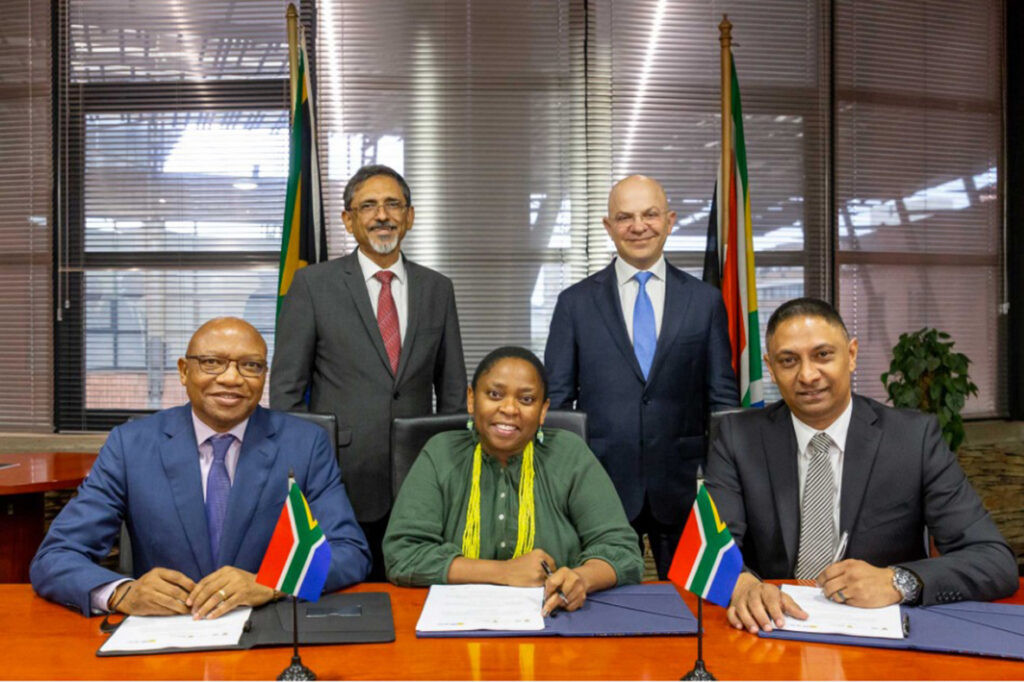BD Manufacturing
Boost For South Africa’s Socioeconomic Programme
Global automotive manufacturer Stellantis has signed a memorandum of understanding with South Africa’s Industrial Development Corporation (IDC) and the Department of Trade, Industry and Competition (dtic) in March to build a manufacturing plant in one of the country’s special economic zones (SEZ) by 2025. Stellantis manufactures the Jeep, Alfa Romeo, Fiat, Citroën, Opel and Peugeot brands for sale in South Africa.
Up in the air
While the location of the facility and scale of investment have yet to be announced, the manufacturer did reveal that it intends to sell one million vehicles in the region by 2030, with 70 per cent of those manufactured locally at the South African facility and its existing plant in Morocco. “South Africa, with its advanced infrastructure, diverse economy, sophisticated capital markets and developed manufacturing capacity, is the ideal location for any company aspiring to reach the continental market more effectively, both from a cost and logistical point of view,” says Leslie Ramsoomar, managing director of Stellantis South Africa. “The manufacturing site in South Africa will be a new building block in our industrialisation strategy and will bring us closer to our customers’ needs in the region.”
While the DTIC declined the opportunity to comment on the deal, Ramsoomar says that Stellantis has been working with the IDC and numerous SEZ teams to determine the best site for the manufacturing facility.
Measuring SEZ success
“The most successful SEZs are those that have become instruments for the accelerated integration of domestic economic activities into global trade and that have made possible the combining of foreign companies’ technology and know-how with local labour in such a way as to open up new markets for the host economy,” wrote Ann Bernstein, executive director, Centre for Development and Enterprise (CDE), in a CDE report, What if SA Had a Special Economic Zone That Was Actually Special?. “Much of the benefit here is simply that of scale: the vastly larger size of the addressable market for goods when firms are able to tap into global demand means that one of the most critical constraints on domestic firms’ growth – the size of the domestic market – is alleviated.”
Ramsoomar says that Stellantis is currently reviewing various options for brands and models that would be most suited for local and export markets, details of which will be revealed at a later stage. “Export is a key element of the localisation and business plan, with plans for this also the subject for later communication,” he says.
State of SEZ
South Africa has 11 existing SEZs and industrial development zones (IDZs) where the facility could be established. The CDE report indicated that, to date, some R25-billion has been spent by government on its IDZs and SEZs, although only three of the 11 proclaimed zones have attracted meaningful commercial activity: Coega, East London, and Dube Tradeport. According to the DTIC, these three zones contribute more than 90 per cent of the total rand value of investments and jobs generated by all the SEZs, to date. “To the best of our knowledge, all the current SEZs are loss-making in that rental income does not cover operational costs, let alone capital investment; none would survive were it not for ongoing government subsidies,” wrote Bernstein.






 Sign-up and receive the Business Media MAGS newsletter OR SA Mining newsletter straight to your inbox.
Sign-up and receive the Business Media MAGS newsletter OR SA Mining newsletter straight to your inbox.